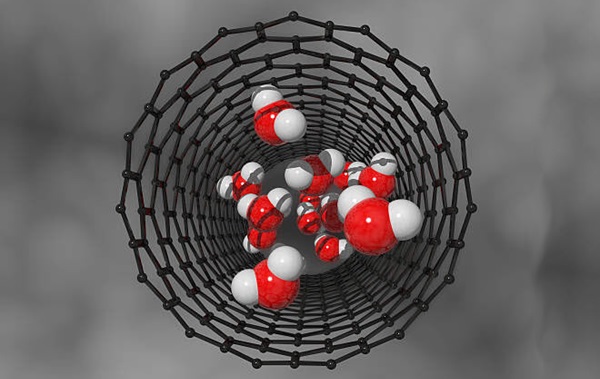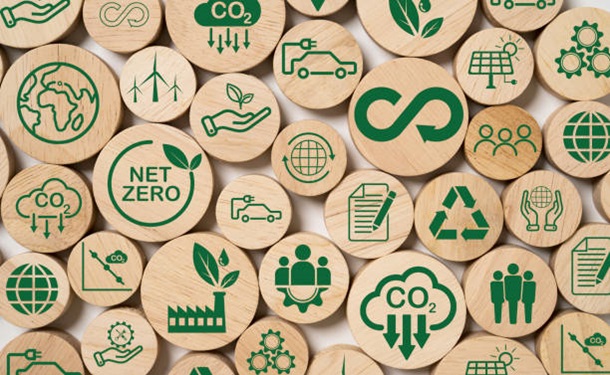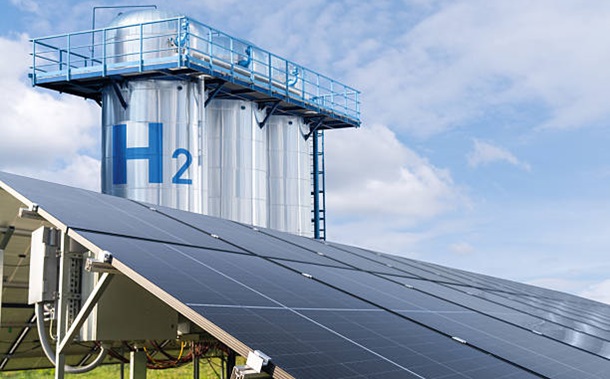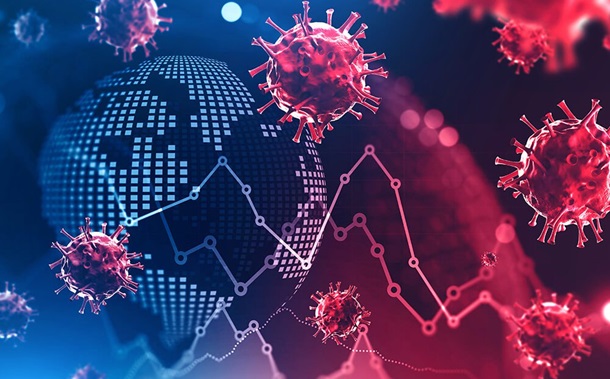European Green Deal Objective for Sustainable Agriculture: Opportunities and Challenges to Reduce Pesticide Use
Downloads
Agriculture in the 21st century faces complex global challenges, including rising food demand, resource depletion, and climate change. These pressures, however, also create opportunities to foster sustainability, enhance resource efficiency, and reduce reliance on synthetic pesticides. In response, the European Union (EU) adopted the European Green Deal in 2019, aiming for climate neutrality by 2050. The Farm to Fork (F2F) strategy sets a specific target: reducing chemical pesticide usage and its related risks by half by 2030. This study aims to assess the overall situation in the EU and the Member States' contributions to achieving the F2F objective of reducing pesticide use as well as risks at the policy level. A novel methodological approach was developed to assess Member State performance using a set of EU-defined indicators – such as Harmonised Risk Indicators (HRI 1 and HRI 2), pesticide sales data from Eurostat and FAOSTAT – and to classify countries into contribution-based groups. Findings reveal progress at the EU level: pesticide sales have declined and HRI 1 has dropped, but HRI 2 has increased. Significant variation among Member States was observed, highlighting the need for tailored policy actions. The study provides an innovative framework and practical insights for policymakers and stakeholders working toward sustainable agricultural transitions in the EU.
Downloads
[1] Abumhadi, N., Todorovska, E., Assenov, B., Tsonev, S., Vulcheva, D., Vulchev, D., Atanasova, L., Savova, S., & Atanassov, A. (2012). Agricultural research in 21st century: Challenges facing the food security under the impacts of climate change. Bulgarian Journal of Agricultural Science, 18(6), 801–818.
[2] Huang, H., Legg, W., & Cattaneo, A. (2010). Climate Change and Agriculture: The Policy Challenge for the 21st Century? EuroChoices, 9(3), 9–15. doi:10.1111/j.1746-692x.2010.00174.x.
[3] Verma, K. K., Song, X. P., Kumari, A., Jagadesh, M., Singh, S. K., Bhatt, R., Singh, M., Seth, C. S., & Li, Y. R. (2025). Climate change adaptation: Challenges for agricultural sustainability. Plant, Cell & Environment, 48(4), 2522–2533. doi:10.1111/pce.15078.
[4] Abbass, K., Qasim, M. Z., Song, H., Murshed, M., Mahmood, H., & Younis, I. (2022). A review of the global climate change impacts, adaptation, and sustainable mitigation measures. Environmental Science and Pollution Research, 29(28), 42539–42559. doi:10.1007/s11356-022-19718-6.
[5] Jarosz, Z. (2023). The European Green Deal – challenges for agriculture and... Current Agronomy, Sciendo, 52(1), 90–96. doi:10.26114/pja.iung.516.2023.52.10.
[6] Wrzaszcz, W., & Prandecki, K. (2020). Agriculture and the European Green Deal. Problems of Agricultural Economics, 365(Special Issue 4), 156–179. doi:10.30858/zer/131841.
[7] Boix-Fayos, C., & de Vente, J. (2023). Challenges and potential pathways towards sustainable agriculture within the European Green Deal. Agricultural Systems, 207. doi:10.1016/j.agsy.2023.103634.
[8] Geiger, F., Bengtsson, J., Berendse, F., Weisser, W. W., Emmerson, M., Morales, M. B., Ceryngier, P., Liira, J., Tscharntke, T., Winqvist, C., Eggers, S., Bommarco, R., Pärt, T., Bretagnolle, V., Plantegenest, M., Clement, L. W., Dennis, C., Palmer, C., Oñate, J. J., … Inchausti, P. (2010). Persistent negative effects of pesticides on biodiversity and biological control potential on European farmland. Basic and Applied Ecology, 11(2), 97–105. doi:10.1016/j.baae.2009.12.001.
[9] Storck, V., Karpouzas, D. G., & Martin-Laurent, F. (2017). Towards a better pesticide policy for the European Union. Science of the Total Environment, 575, 1027–1033. doi:10.1016/j.scitotenv.2016.09.167.
[10] Bourguet, D., & Guillemaud, T. (2016). The Hidden and External Costs of Pesticide Use. Sustainable Agriculture Reviews, 19, 35–120. doi:10.1007/978-3-319-26777-7_2.
[11] Boxall, A. B. A., Sinclair, C. J., Fenner, K., Kolpin, D., & Maund, S. J. (2004). When synthetic chemicals degrade in the environment. Environmental Science and Technology, 38(19), 368 –375. doi:10.1021/es040624v.
[12] Robu, R. G., Holobiuc, A. M., Alexoaei, A. P., Cojanu, V., & Miron, D. (2023). Regional Patterns of Pesticide Consumption Determinants in the European Union. Sustainability (Switzerland), 15(3). doi:10.3390/su15032070.
[13] Radlińska, K. (2025). Changes in the Structure of Agriculture in Central and Eastern Europe in the Light of the European Green Deal. Sustainability (Switzerland), 17(1), 104. doi:10.3390/su17010104.
[14] Triantafyllidis, V., Mavroeidis, A., Kosma, C., Karabagias, I. K., Zotos, A., Kehayias, G., Beslemes, D., Roussis, I., Bilalis, D., Economou, G., & Kakabouki, I. (2023). Herbicide Use in the Era of Farm to Fork: Strengths, Weaknesses, and Future Implications. Water, Air, and Soil Pollution, 234(2), 94. doi:10.1007/s11270-023-06125-x.
[15] Anaya Zamora, I. C., Mier y Terán Giménez Cacho, M., Urdapilleta Carrasco, J., & Ferguson, B. (2020). Challenges and strategies for reducing pesticide use in Chiapas, Mexico, from the perspective of civil society organizations. Agricultura Sociedad y Desarrollo, 17(1), 91–119. doi:10.22231/asyd.v17i1.1324. (In Spanish).
[16] Thapa, B., Bharati, S., & Katuwal, D. (2024). Socio-Economic Issues on Pesticide Use. Journal of the Institute of Agriculture and Animal Science, 38(1), 77–85. doi:10.3126/jiaas.v38i1.73086.
[17] Lamichhane, J. R., Dachbrodt-Saaydeh, S., Kudsk, P., & Messéan, A. (2016). Toward a reduced reliance on conventional pesticides in European agriculture. Plant Disease, 100(1), 10–24. doi:10.1094/PDIS-05-15-0574-FE.
[18] Thomine, E., Mumford, J., Rusch, A., & Desneux, N. (2022). Using crop diversity to lower pesticide use: Socio-ecological approaches. Science of the Total Environment, 804, 150156. doi:10.1016/j.scitotenv.2021.150156.
[19] European Commission. (2020). A Farm to Fork Strategy for a fair, healthy and environmentally friendly food system. COM(2020)381 Final. European Commission, Brussels, Belgium. Available online: https://eur-lex.europa.eu/legal-content/EN/TXT/?uri=celex:52020DC0381 (accessed on June 2025).
[20] Böcker, T., Möhring, N., & Finger, R. (2019). Herbicide free agriculture? A bio-economic modelling application to Swiss wheat production. Agricultural Systems, 173, 378–392. doi:10.1016/j.agsy.2019.03.001.
[21] Lechenet, M., Dessaint, F., Py, G., Makowski, D., & Munier-Jolain, N. (2017). Reducing pesticide use while preserving crop productivity and profitability on arable farms. Nature Plants, 3(3), 1–6. doi:10.1038/nplants.2017.8.
[22] Silva, V., Yang, X., Fleskens, L., Ritsema, C. J., & Geissen, V. (2022). Environmental and human health at risk – Scenarios to achieve the Farm to Fork 50% pesticide reduction goals. Environment International, 165, 107296. doi:10.1016/j.envint.2022.107296.
[23] Gaba, S., Gabriel, E., Chadœuf, J., Bonneu, F., & Bretagnolle, V. (2016). Herbicides do not ensure for higher wheat yield, but eliminate rare plant species. Scientific Reports, 6(1), 1–10. doi:10.1038/srep30112.
[24] Pilvere, A., Pilvere, I., Upite, I., & Nipers, A. (2024). European Union Farm to Fork Strategy: Pesticide Use Reduction Possibilities. 24th International Multidisciplinary Scientific GeoConference Proceedings SGEM 2024, Ecology, Economics, Education and Legislation, Vol 24, Issue 5.1, 24, 521–528. doi:10.5593/sgem2024/5.1/s21.65.
[25] Nipers, A., Pilvere, I., Upite, I., Krievina, A., & Pilvere, A. (2024). When pesticide reduction objectives meet business as usual: Possible impacts on the crop sector in Latvia. Resources, Environment and Sustainability, 15. doi:10.1016/j.resenv.2023.100145.
[26] Bremmer, J., Gonzalez-Martinez, A., Jongeneel, R., Huiting, H., Stokkers, R., & Ruijs, M. (2021). Impact assessment of EC 2030 Green Deal Targets for sustainable crop production. Wageningen Economic Research, Wageningen University & Research, Wageningen, Netherlands. doi:10.18174/558517.
[27] Keulemans, W., Bylemans, D., & De Coninck, B. (2019). Farming without plant protection products Can we grow without using herbicides, fungicides and insecticides? European Parliamentary Research Service PE 634.416, European Commission, Brussels, Belgium. Available online: https://www.europarl.europa.eu/RegData/etudes/IDAN/2019/634416/EPRS_IDA(2019)634416_EN.pdf (accessed on June 2025).
[28] Arts, G. H. P., & Thouément, H. A. A. (2023). Overview state of the art knowledge and regulations for pesticides with a lower risk profile. Wageningen Economic Research, Wageningen University & Research, Wageningen, Netherlands. doi:10.18174/644627.
[29] Klinnert, A., Barbosa, A. L., Catarino, R., Fellmann, T., Baldoni, E., Beber, C., Hristov, J., Paracchini, M. L., Rega, C., Weiss, F., Witzke, P., & Rodriguez-Cerezo, E. (2024). Landscape features support natural pest control and farm income when pesticide application is reduced. Nature Communications, 15(1), 5384. doi:10.1038/s41467-024-48311-3.
[30] Hokkanen, H. M. T. (2015). Integrated pest management at the crossroads: Science, politics, or business (as usual)? Arthropod-Plant Interactions, 9(6), 543–545. doi:10.1007/s11829-015-9403-y.
[31] Gensch, L., Jantke, K., Rasche, L., & Schneider, U. A. (2024). Pesticide risk assessment in European agriculture: Distribution patterns, ban-substitution effects and regulatory implications. Environmental Pollution, 348, 123836. doi:10.1016/j.envpol.2024.123836.
[32] Cech, R. M., Jovanovic, S., Kegley, S., Hertoge, K., Leisch, F., & Zaller, J. G. (2022). Reducing overall herbicide use may reduce risks to humans but increase toxic loads to honeybees, earthworms and birds. Environmental Sciences Europe, 34(1), 44. doi:10.1186/s12302-022-00622-2.
[33] Leach, A. W., & Mumford, J. D. (2008). Pesticide Environmental Accounting: A method for assessing the external costs of individual pesticide applications. Environmental Pollution, 151(1), 139–147. doi:10.1016/j.envpol.2007.02.019.
[34] Cech, R., Leisch, F., & Zaller, J. G. (2022). Pesticide Use and Associated Greenhouse Gas Emissions in Sugar Beet, Apples, and Viticulture in Austria from 2000 to 2019. Agriculture (Switzerland), 12(6), 879. doi:10.3390/agriculture12060879.
[35] Lal, R. (2004). Carbon emission from farm operations. Environment International, 30(7), 981–990. doi:10.1016/j.envint.2004.03.005.
[36] Heimpel, G. E., Yang, Y., Hill, J. D., & Ragsdale, D. W. (2013). Environmental Consequences of Invasive Species: Greenhouse Gas Emissions of Insecticide Use and the Role of Biological Control in Reducing Emissions. PLoS ONE, 8(8), 72293. doi:10.1371/journal.pone.0072293.
[37] Lo, C. C. (2010). Effect of pesticides on soil microbial community. Journal of Environmental Science and Health - Part B Pesticides, Food Contaminants, and Agricultural Wastes, 45(5), 348–359. doi:10.1080/03601231003799804.
[38] Shi, L., Guo, Y., Ning, J., Lou, S., & Hou, F. (2020). Herbicide applications increase greenhouse gas emissions of alfalfa pasture in the inland arid region of northwest China. PeerJ, 2020(5). doi:10.7717/peerj.9231.
[39] Sun, B., & Xu, X. (2022). Spatial–temporal evolution of the relationship between agricultural material inputs and agricultural greenhouse gas emissions: experience from China 2003–2018. Environmental Science and Pollution Research, 29(31), 46600–46611. doi:10.1007/s11356-022-19195-x.
[40] Holt, A. R., Alix, A., Thompson, A., & Maltby, L. (2016). Food production, ecosystem services and biodiversity: We can’t have it all everywhere. Science of the Total Environment, 573, 1422–1429. doi:10.1016/j.scitotenv.2016.07.139.
[41] Möhring, N., Ingold, K., Kudsk, P., Martin-Laurent, F., Niggli, U., Siegrist, M., Studer, B., Walter, A., & Finger, R. (2020). Pathways for advancing pesticide policies. Nature Food, 1(9), 535–540. doi:10.1038/s43016-020-00141-4.
[42] López-Ballesteros, A., Delaney, A., Quirke, J., Stout, J. C., Saunders, M., Carolan, J. C., White, B., & Stanley, D. A. (2022). Assessing availability of European plant protection product data: an example evaluating basic area treated. PeerJ, 10. doi:10.7717/peerj.13586.
[43] GmbH, Ö., Münch, A., Badouix, M., GORNY, H., Messinger, I., Schuh, B., Beck, M., Bodat, S., & van Bunnen, P. (2023). Research for AGRI Committee – Comparative analysis of the CAP Strategic Plans and their effective contribution to the achievement of the EU objectives, European Parliament, Policy Department for Structural and Cohesion Policies, Brussels, Belgium. Available online: https://www.europarl.europa.eu/thinktank/en/document/IPOL_STU(2023)747255 (accessed on June 2025).
[44] Prigoreanu, I., Ungureanu, B. A., Ungureanu, G., & Ignat, G. (2024). Analysis of Sustainable Energy and Environmental Policies in Agriculture in the EU Regarding the European Green Deal. Energies, 17(24), 6428. doi:10.3390/en17246428.
[45] European Commission. (2020). Recommendations to the Member States as regards their strategic plan for the Common Agricultural Policy. European Commission (COM/2020/846 final), Brussels, Belgium. Available online: https://eur-lex.europa.eu/legal-content/EN/TXT/?uri=celex:52020DC0846 (accessed on June 2025).
[46] EEA Report 11/2023. (2023). European Union 8th Environment Action Programme: Monitoring report on progress towards the 8th EAP objectives 2023 edition. European Environment Agency, Copenhagen, Denmark. Available online: https://www.eea.europa.eu/en/analysis/publications/european-union-8th-environment-action-programme (accessed on June 2025).
[47] PE/64/2021/REV/1. (2021). Regulation (EU) 2021/2115 of the European Parliament and of the Council of 2 December 2021 establishing rules on support for strategic plans to be drawn up by Member States under the Common agricultural policy (CAP Strategic Plans) and financed by the European Agricultural Guarantee Fund (EAGF) and by the European Agricultural Fund for Rural Development (EAFRD) and repealing Regulations (EU) No 1305/2013 and (EU) No 1307/2013. European Commission, Brussels, Belgium. Available online: https://eur-lex.europa.eu/eli/reg/2021/2115/oj (accessed on June 2025).
[48] European Commission (2022). Common monitoring and evaluation framework. European Commission, Brussels, Belgium. Available online: https://agriculture.ec.europa.eu/common-agricultural-policy/cap-overview/cmef_en (accessed on June 2025).
[49] European Commission (2025). Result Indicators dashboard. European Commission, Brussels, Belgium. Available online: https://agridata.ec.europa.eu/extensions/DashboardCapPlan/result_indicators.html (accessed on June 2025).
[50] COM/2019/640 final. (2019). Communication From the Commission to the European Parliament, The European Council, The Council, The European Economic and Social Committee and the Committee of the Regions the European Green Deal. European Commission, Brussels, Belgium. Available online: https://eur-lex.europa.eu/legal-content/EN/TXT/?uri=celex:52019DC0640 (accessed on June 2025).
[51] Kasztelan, A. (2020). How circular are the European economies? A taxonomic analysis based on the INEC (index of national economies’ circularity). Sustainability (Switzerland), 12(18), 7613. doi:10.3390/su12187613.
[52] Nowak, A., & Kasztelan, A. (2022). Economic competitiveness vs. green competitiveness of agriculture in the European Union countries. Oeconomia Copernicana, 13(2), 379–405. doi:10.24136/OC.2022.012.
[53] Eurostat. (2020). Sales of pesticides in the EU. Eurostat, Luxembourg City, Luxembourg. Available online: https://ec.europa.eu/eurostat/web/products-eurostat-news/-/ddn-20200603-1 (accessed on June 2025).
[54] Eurostat (2022). 346 000 tonnes of pesticides sold in 2020 in the EU. Eurostat, Luxembourg City, Luxembourg. Available online: https://ec.europa.eu/eurostat/web/products-eurostat-news/-/ddn-20220502-1 (accessed on June 2025).
[55] Eurostat. (2023). Agri-environmental indicator – consumption of pesticides. Eurostat, Luxembourg City, Luxembourg. Available online: https://ec.europa.eu/eurostat/statistics-explained/index.php?title=Agri-environmental_indicator_-_consumption_of_ pesticides#Analysis_at_EU_and_country_level (accessed on June 2025).
[56] Eurostat (2024). Harmonised risk indicator 1 for pesticides by categorisation of active substances. Eurostat, Luxembourg City, Luxembourg. doi:10.2908/AEI_HRI.
[57] Eurostat (2024). Performance of the agricultural sector - Statistics Explained. Eurostat, Luxembourg City, Luxembourg. Available online: https://ec.europa.eu/eurostat/statistics-explained/index.php?title=Performance_of_the_agricultural_ sector#Value_of_agricultural_output (accessed on June 2025).
[58] Eurostat (2025). Pesticide sales. Eurostat, Luxembourg City, Luxembourg. doi:10.2908/AEI_FM_SALPEST09.
[59] Eurostat (2025). Utilised agricultural area by categories. Eurostat, Luxembourg City, Luxembourg. doi:10.2908/TAG00025.
[60] FAOSTAT (2024). Pesticides use, 1990–2022. Food and Agriculture Organization (FAO), Rome, Italy doi:10.4060/CD1486EN.
[61] European Commission (2025). C48 Risk, use and impacts of pesticides. European Commission, Brussels, Belgium. Available online: https://agridata.ec.europa.eu/extensions/IndicatorsEnvironmental/Pesticides.html (accessed on June 2025).
[62] Shattuck, A., Werner, M., Mempel, F., Dunivin, Z., & Galt, R. (2023). Global pesticide use and trade databas e (GloPUT): New estimates show pesticide use trends in low-income countries substantially underestimated. Global Environmental Change, 81, 102693. doi:10.1016/j.gloenvcha.2023.102693.
[63] Tang, F. H. M., Lenzen, M., McBratney, A., & Maggi, F. (2021). Risk of pesticide pollution at the global scale. Nature Geoscience, 14(4), 206–210. doi:10.1038/s41561-021-00712-5.
[64] Bernhardt, E. S., Rosi, E. J., & Gessner, M. O. (2017). Synthetic chemicals as agents of global change. Frontiers in Ecology and the Environment, 15(2), 84–90. doi:10.1002/fee.1450.
[65] European Commission. (2024). Trends in Harmonised Risk Indicators for the European Union. European Commission, Brussels, Belgium. Available online: https://food.ec.europa.eu/plants/pesticides/sustainable-use-pesticides/harmonised-risk-indicators/trends-eu_en (accessed on June 2025).
[66] C/2019/3580. (2019). Commission Directive (EU) 2019/782 of 15 May 2019 amending Directive 2009/128/EC of the European Parliament and of the Council as regards the establishment of harmonised risk indicators (Text with EEA relevance). European Commission, Brussels, Belgium. Available online: https://eur-lex.europa.eu/eli/dir/2019/782/oj (accessed on June 2025).
[67] European Commission (2025). Member States: Trends. Trend in use and risk of chemical pesticides and the use of more hazardous pesticides. European Commission, Brussels, Belgium. Available online: https://food.ec.europa.eu/plants/ pesticides/sustainable-use-pesticides/farm-fork-targets-progress/member-states-trends_en?prefLang=lv&etrans=lv (accessed on June 2025).
[68] European Commission. (2024). EU: Trends. Trends in the use and risk of chemical pesticides and in the use of more hazardous pesticides. European Commission, Brussels, Belgium. Available online: https://food.ec.europa.eu/plants/pesticides/sustainable-use-pesticides/farm-fork-targets-progress/eu-trends_en (accessed on June 2025).
[69] COM(2020) 204 Final. (2020). On the experience gained by Member States on the implementation of national targets established in their National Action Plans and on progress in the implementation of Directive 2009/128/EC on the sustainable use of pesticides. Report from the Commission to the European Parliament and the Council. European Commission, Brussels, Belgium. Available online: https://data.consilium.europa.eu/doc/document/ST-8238-2020-INIT/en/pdf (accessed on June 2025).
[70] COM(2020) 204 Final. (2020). Report from the Commission to the European Parliament and the Council. On the experience gained by Member States on the implementation of national targets established in their National Action Plans and on progress in the implementation of Directive 2009/128/EC on the sustainable use of pesticides. European Commission, Brussels, Belgium. Available online: https://ec.europa.eu/food/system/files/2020-05/pesticides_sud_report-act_2020_en.pdf (accessed on June 2025).
[71] European Commission (2025). Pesticides. European Commission, Brussels, Belgium. Available online: https://ec.europa.eu/food/plants/pesticides_en (accessed on June 2025).
[72] Sud, M. (2020). Managing the biodiversity impacts of fertiliser and pesticide use: Overview and insights from trends and policies across selected OECD countries. OECD Environment Working Papers, No. 155. OECD Publishing, Paris, France. doi:10.1787/63942249-en.
[73] European Commission: Directorate-General for Agriculture and Rural Development (2023). Mapping and analysis of CAP strategic plans - Assessment of joint efforts for 2023-2027. Publications Office of the European Union, Luxembourg City, Luxembourg. doi:10.2762/71556.
[74] Blagoeva, N., & Georgieva, V. (2023). Pesticide tax-the new challenge in Europe's green tax policy. Bulgarian Journal of Agricultural Science, 29(1).
[75] Kasztelan, A., & Nowak, A. (2021). Construction and empirical verification of the agri-environmental index (AEI) as a tool for assessing the green performance of agriculture. Energies, 14(1), 45. doi:10.3390/en14010045.
[76] Jarosz-Angowska, A., Kasztelan, A., & Kołodziej, E. (2022). The evaluation of the competitive potential and performance of the agricultural sector in the EU countries based on a synthetic index. Optimum. Economic Studies, 3(109), 103–119. doi:10.15290/oes.2022.03.109.08.
[77] Burtscher-Schaden, H. (2022). HRI 1: A risk indicator to promote toxic pesticides? Friends of the Earth Austria, Vienna, Austria. Available online: https://www.organicseurope.bio/content/uploads/2022/06/GLOBAL2000_HRI-1_final_28022022.pdf?dd (accessed on June 2025).
[78] Böcker, T., & Finger, R. (2016). European pesticide tax schemes in comparison: An analysis of experiences and developments. Sustainability (Switzerland), 8(4), 378. doi:10.3390/su8040378.
[79] Nowak, A., Krukowski, A., & Różańska-Boczula, M. (2019). Assessment of sustainability in agriculture of the European Union countries. Agronomy, 9(12), 890. doi:10.3390/agronomy9120890.
[80] Duhamel, P. N., Pathak, S., Ling Chen Yii, J., & Thammachote, P. (2024). Exploring Critical Success Factors in Agritourism: A Mixed-Methods Approach. Journal of Human, Earth, and Future, 5(3), 421–437. doi:10.28991/HEF-2024-05-03-08.
[81] Malta Competition and Consumer Affairs Authority. (2019). Malta’s National Action Plan for the Sustainable Use of Pesticides. Malta Competition and Consumer Affairs Authority, Il-Blata l-Bajda, Malta. Available online: https://mccaa.org.mt/media/3667/nap-for-the-sustainable-use-of-pesticides-2019-2023-for-malta.pdf (accessed on June 2025).
- This work (including HTML and PDF Files) is licensed under a Creative Commons Attribution 4.0 International License.




















